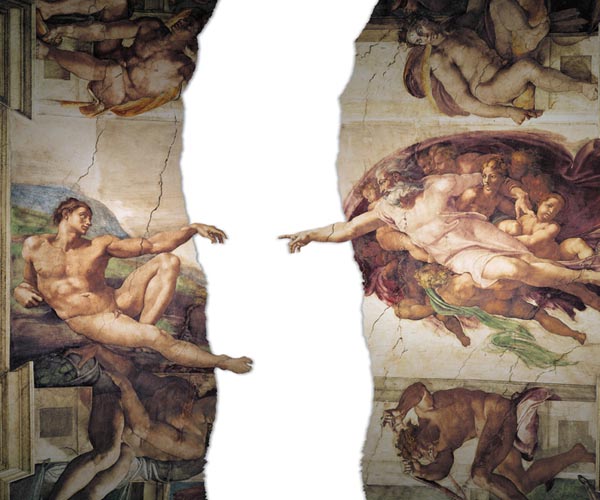Image Details

Scala/Art Resource, NY
A dynamic, purposeful God extends his arm across the heavens toward the languid Adam in Michelangelo’s famed fresco, painted in 1511 on the ceiling of the Vatican’s Sistine Chapel. Author Pamela Tamarkin Reis suggests that two differing perspectives underlie the two distinctive accounts of the Creation in the Book of Genesis. The first, more optimistic account (Genesis 1:1–2:4a) is depicted from the point of view of a magnanimous God who bestows ample blessings upon his works, whereas the second (Genesis 2:4b–24), written from Adam’s perspective, reveals human egotism and negativity.
Although biblical source critics have long attributed the two Creation narratives to different authors, Reis argues—using the example of Japanese director Akira Kurosawa’s classic 1950 film Rashomon—that one talented author may have crafted both stories, intentionally adopting two divergent voices to deliver a nuanced account of the world’s beginnings.
